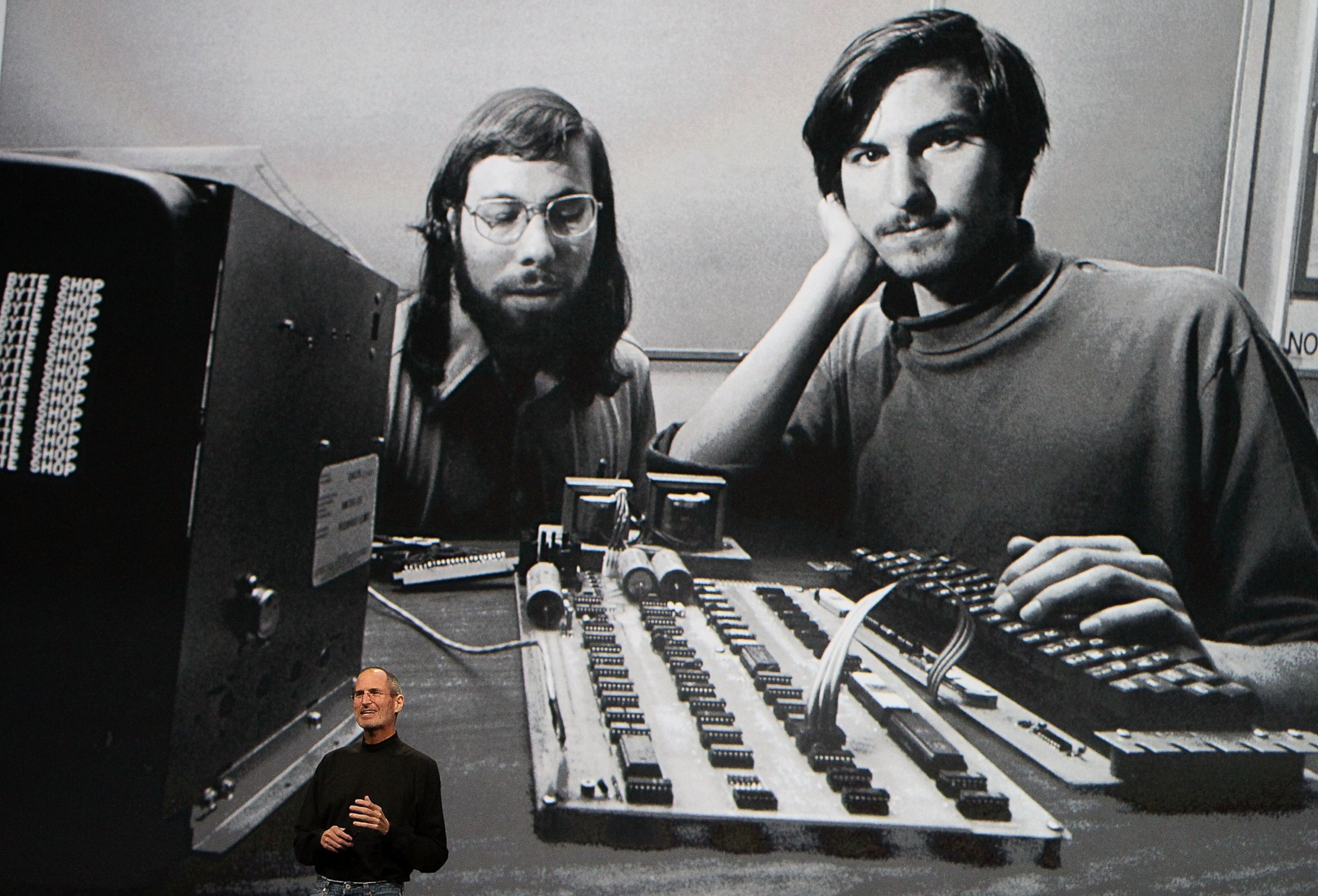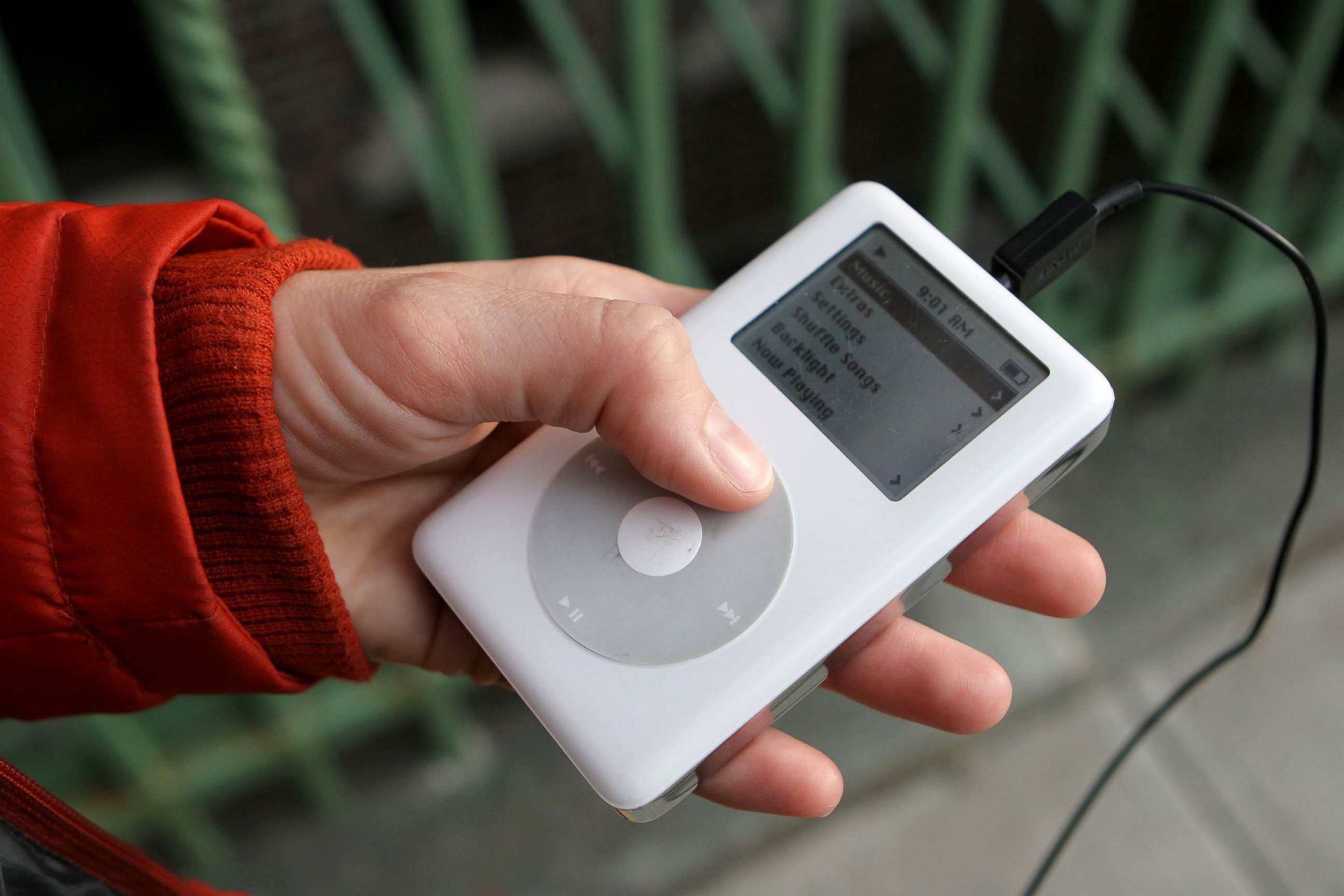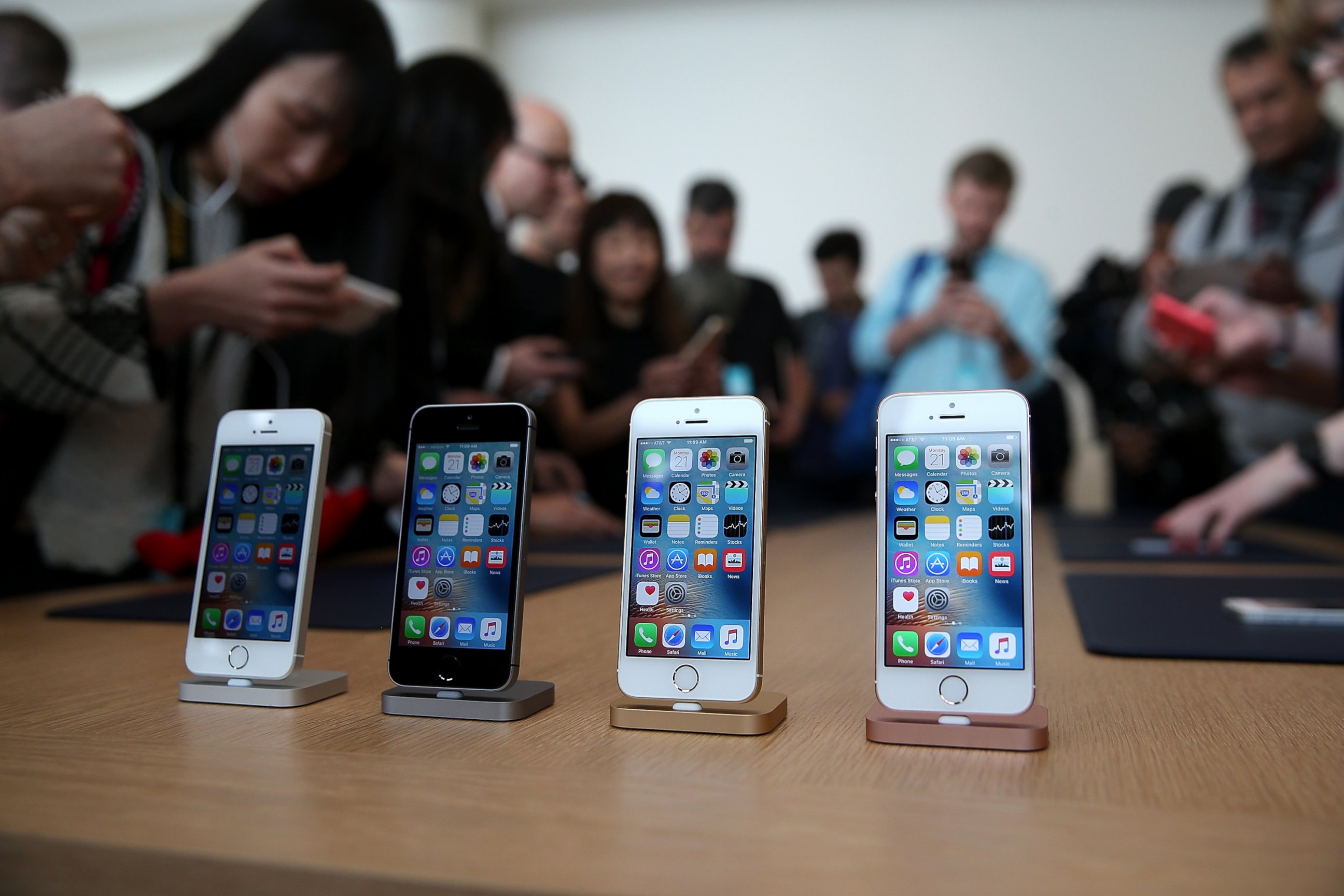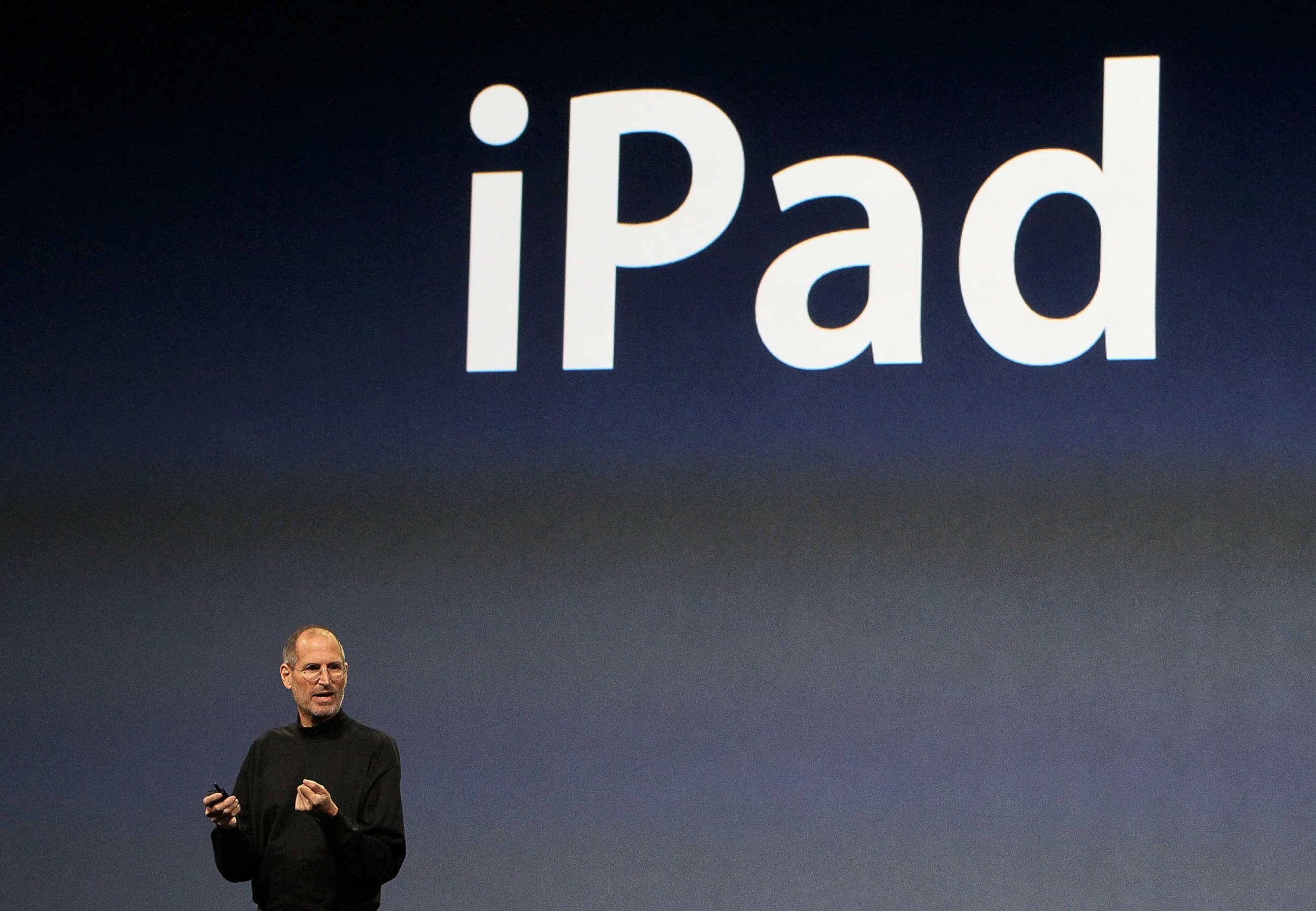Apple at 40: People, Products and Moments That Shaped the Company
From the early days with Woz to Apple's encryption battle with the government.
— -- Happy Birthday, Apple!
On April 1, 1976 -- 40 years ago today -- Steve Jobs, Steve Wozniak and Ronald Wayne formed Apple Computer, a company that would one day transcend computers -- changing the way we communicate, create and connect, and even reshaping the foundation of the recording industry.
(Wayne cashed out after 12 days. "I left because I didn’t feel that this new enterprise would be the working environment that I saw for myself," he wrote in 2012.)
While it's difficult to list just 40 -- here are some of the key people, products and moments that have shaped Apple over the past 40 years.
1. Steve Jobs
He brought relentless passion and creativity that continues to live on at Apple after his death.
2. Steve Wozniak
Known by his nickname "Woz," Wozniak was the technical brains behind Apple and built the company's earliest computer -- the Apple I -- by hand. His technical expertise coupled with Jobs' vision allowed the company to make inroads into the new personal computing market.

3. The Jobs Family Home
A lot of great Silicon Valley companies started in a garage, but Wozniak said it's a myth he and Jobs conducted most of their business from Jobs' parents' garage.
“The garage is a bit of a myth. It’s overblown,” Wozniak told Bloomberg BusinessWeek. “The garage represents us better than anything else, but we did no designs there. We would drive the finished products to the garage, make them work and then we’d drive them down to the store that paid us cash."
It's where the two Steves first started their business.
4. The Apple I
Apple's first computer was handmade by Woz, ran on BASIC and sold for $666.66.
5. Apple II Series
These are the computers that began to put Apple in more homes. The first Apple II was introduced in 1977, offering a more user-friendly experience than its predecessor with tape-based storage and color graphics, among other upgrades. Apple continued to innovate with this line until production ceased in the early 1990s and it shifted its focus to the Mac.
6. Joanna Hoffman
As an early member of Mac development team, Hoffman, who was portrayed by Kate Winslet in the "Steve Jobs" movie, worked closely with the founder. She joined him at NeXT after Jobs left Apple in 1985.
7. John Sculley
The former Pepsi CEO later led Apple but had a falling out with Jobs, resulting in the board siding with Sculley and Jobs leaving the company in 1985. Sculley now lives in Palm Beach, Florida, where, according to his Twitter bio, he's a mentor, adviser, entrepreneur and investor in all things tech.
8. Lisa
Officially, Lisa stood for "Local Integrated Software Architecture" but is also the name of Jobs' daughter. It has the distinction of being the first computer aimed at business users with a GUI (graphical user interface) in 1983. The downside: it cost around $10,000.
9. Apple Goes Public
Apple went public in 1980 at $22 a share. It generated more capital than any IPO since the Ford Motor Company and made around 300 people instant millionaires, according to Apple Insider.
10. The Macintosh
Making its debut in 1984, the "insanely great" Macintosh came equipped with a mouse and an integrated graphical user interface that wowed the audience as the Macintosh name moved across the screen. Initially released with 128K of memory, Apple later expanded it to 512K.
11. 1984 Commercial
One of the most classic Super Bowl commercials ever shows a dystopian future along with an athlete who runs, swings a hammer and smashes a screen where a "Big Brother" voice had been addressing a crowd. It ends with the tagline: "On January 24th, Apple Computer will introduce the Macintosh. And you’ll see why 1984 won’t be like '1984.'
12. NeXT
After leaving Apple in 1985, Jobs founded NeXT, a company dedicated to making top-of-the-line work station computers and software. Apple purchased the company in 1996 and Jobs returned as CEO.
13. Tim Cook
Cook, who worked closely alongside Jobs and served as acting CEO when Jobs was on medical leave, officially took on the top job in 2011. Since then, he's led Apple through a new era of innovation, releasing the Apple Watch, the company's first wearable device, larger iPhones, Apple Pay and being a staunch public voice for the right to customer privacy.
14. Jony Ive
Love your iPhone? You have Sir Jony Ive to thank for that. The Brit has led Apple's design team sine 1996.
15. Phil Schiller
Apple fans have come to know Schiller for his frequent appearances on stage at launch events. He is the senior vice president of marketing, but Schiller has also played a role in product development. He's the one who came up with the spin-wheel interface on the first iPod, according to a 2012 Bloomberg profile.
16. Angela Ahrendts
Ahrendts, who joined the company in May 2014 after stepping down as the CEO of British clothing brand Burberry, is Apple's senior vice president of retail and online stores and is tasked with the operation and expansion of the global retail experience.
17. PowerBook
Apple ushered in the beginning of the "portable" computer revolution in 1991 with the debut of the PowerBook.
18. iMac
The first iMac was introduced in 1998 with the goal to craft the ultimate experience when it comes to desktop computers.
19. Apple Retail Stores
Apple opened its first two retail stores in Virginia and California in 2001.

20. iPod
The portable music player debuted in October 2001 -- marking the beginning of an era that changed the way people listen to -- and soon -- purchased music.
21. iTunes Store
Created in 2003, the iTunes store gave people the ability to download and play almost any song they wanted, when they wanted it. The convenience and ability to purchase by track instead of having to buy an artist's entire album at a retail store ultimately led to a shift in the way people get their music.
22. iPod Shuffle
The iPod's smaller, cuter offspring was first released in 2005, offering a clip-and-go experience perfect for people wanting to listen to music on the go or while at the gym.
23. MacBook
The first in Apple's family of MacBook laptop computers made its debut in 2006.
24. Apple TV
The first generation of Apple TV began shipping in 2007. It's gone through several generations since then with the latest version offering integrated Siri support so users can speak commands into their remote, such as "Find the best funny movies from the '80s."

25. The iPhone
Steve Jobs wasn't kidding when he called the iPhone a "revolutionary and magical product that is literally five years ahead of any other mobile phone" when it was introduced in 2007.
While other phones on the market used buttons, the first iPhone model introduced the experience of using fingers to scroll. It was also the beginning of the shift in how we exchange messages with friends, family and colleagues. The first iPhone came with Apple's visual voicemail.
26. Apple Shortens Its Name
Apple Computer Inc. dropped the "Computer" from its name in 2007.
"The Mac, iPod, Apple TV and iPhone. Only one of those is a computer. So we’re changing the name," Jobs reportedly said at the time.
27. App Store
Apple's App Store opened for business in 2008 and has since become an economic juggernaut, bringing in nearly $40 billion for developers since it first began, according to data Apple released in January.
"Apple is now responsible for creating and supporting 1.9 million jobs in the U.S. alone. Nearly three-quarters of those jobs -- over 1.4 million -- are attributable to the community of app creators, software engineers and entrepreneurs building apps for iOS, as well as non-IT jobs supported directly and indirectly through the app economy," the company said.

28. The iPad
Some people scoffed at the name, others said Apple simply made a larger iPad Touch. While it didn't radically change computing, Apple fanatics have still eagerly purchased hundreds of millions of the devices. Apple's latest iteration -- the powerful iPad Pro -- could be the device that finally replace a laptop for some users.
29. Siri
Those of us with an iPhone gained a personal assistant in 2011 with the introduction of Apple's Siri, who has become an iOS mainstay, making helpful notes, answering questions and politely giving directions.
30. iCloud
The iCloud changed content storage and syncing across devices, making it easy to transfer your information to a new device or not having to worry about losing precious data and photos if a device is stolen.
31. Beats Acquisition
Beats, the headphone maker and music streaming distributor founded by hip-hop star Dr. Dre and record producer Jimmy Iovine, was acquired by Apple in 2014.
32. Apple Music
Apple joined the music streaming marketplace -- which has largely been dominated by Spotify -- last year with the launch of its subscription based Apple Music. Apple also launched Beats 1 Radio, a 24/7 worldwide radio station.

33. Apple Watch
Apple's long-rumored wearable arrived in stores this time last year. Apple hasn't said how many watches the company has sold, however CEO Tim Cook recently said it is the best-selling smartwatch in the world and announced a price cut, bringing the entry level Apple Watch Sport to $299.
34. Apple Pay
Apple jumped into the mobile payments space with the debut of Apple Pay in 2014. All users have to do is position their iPhone (6, 6s or SE) or Apple Watch near one of the readers at a store, hold their finger on their Touch ID and they're good to go. The simple, swift checkout motion is made easy due to the the Near Field Communication antenna, which connects with the payment point to complete the transaction.
35. HealthKit
The HealthKit framework is changing the way we track our health. With HealthKit, developers can make all the health and fitness related apps on an iOS device work together, giving users an easy-to-read dashboard tracking the metrics that matter to them the most.
36. ResearchKit
Apple's ResearchKit is also transforming the way medial research is conducted, allowing users who opt-in to use their iPhone as a tool to help medical professionals conduct their research. Research institutions like the Dana-Farber Cancer Institute and Sage Bionetworks have already used it for breast cancer studies. Their app, called "Share the Journey: Mind, Body and Wellness after Breast Cancer," tracks five issues related to breast cancer treatment: fatigue, cognitive difficulties, sleep disturbances, mood changes and reduction in exercise performance.
37. One Billion iOS Devices
Apple announced in January there are now more than one billion active iOS devices in the world, marking an incredible milestone for the company as it neared its 40th anniversary.
38. Liam
Apple introduced a research and design project last month called Liam that is designed to deconstruct old iPhones, allowing certain materials inside to be re-purposed. Apple's team also launched Apple Renew, a program that lets users take old products to an Apple store or send them in for free by printing a pre-paid label printed at apple.com/recycling.
39. The Old Cupertino Campus
Apple's iPhone SE unveiling will likely be its last at its old Cupertino campus, Tim Cook said. The team is set open a new office complex that resembles a spaceship as early as 2017.
40. Encryption Battle With FBI
When federal officials issued an order compelling Apple to help unlock an iPhone belonging to one of the San Bernardino shooters, the company vigorously defended its right to not intervene, saying creating a so-called back door could put the privacy of millions of people at risk. The FBI said on Monday that it found a way in without Apple's help, but the moment will surely go down as a defining one in the company's history -- especially as more cases potentially emerge in the future.




